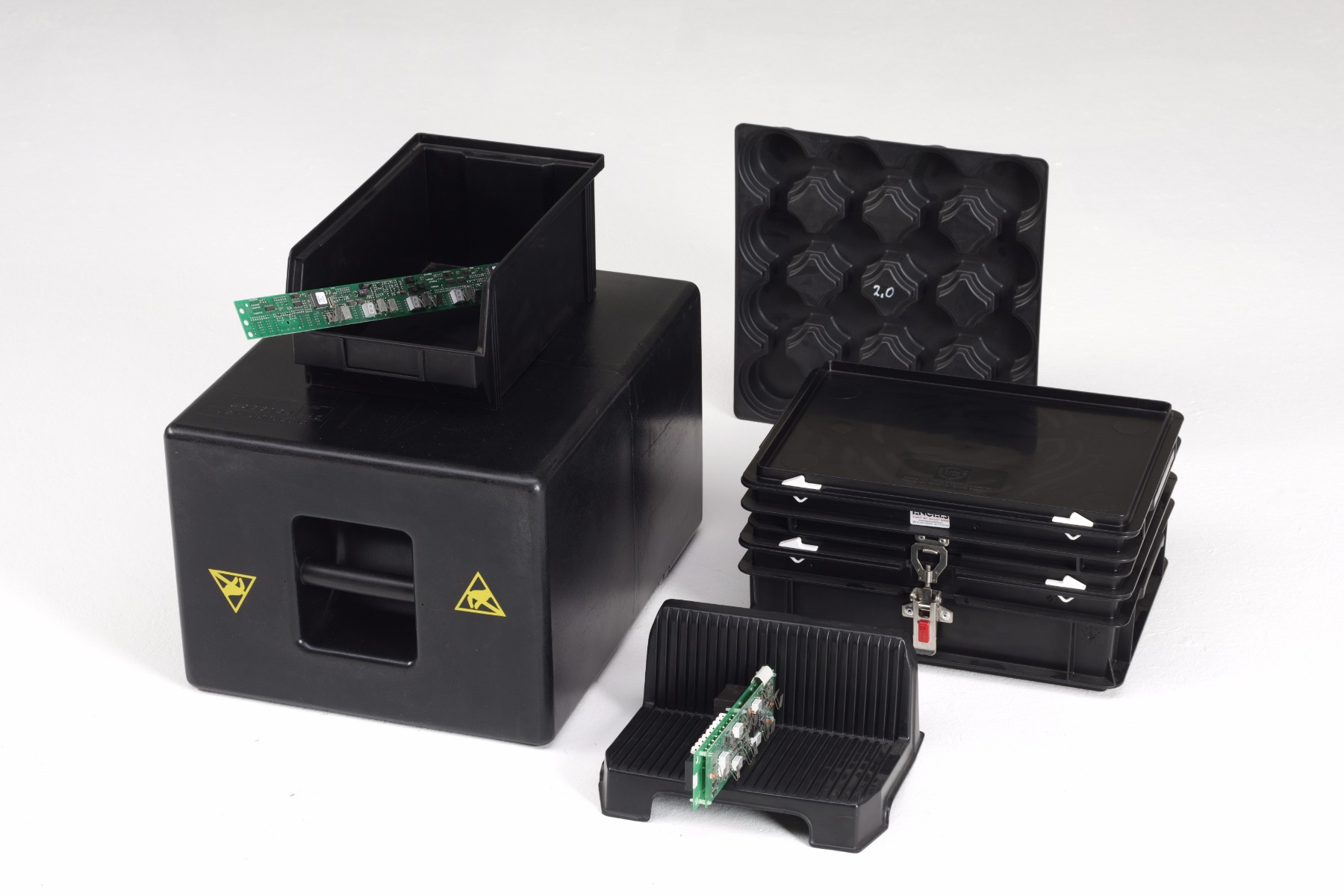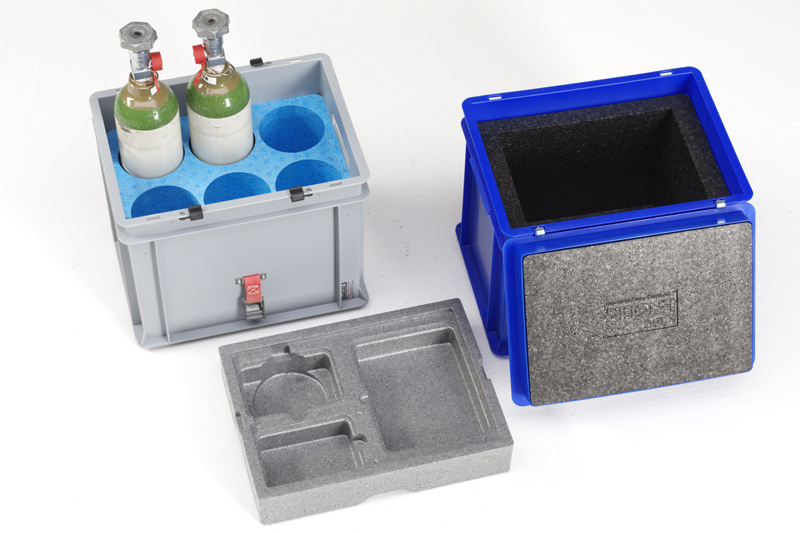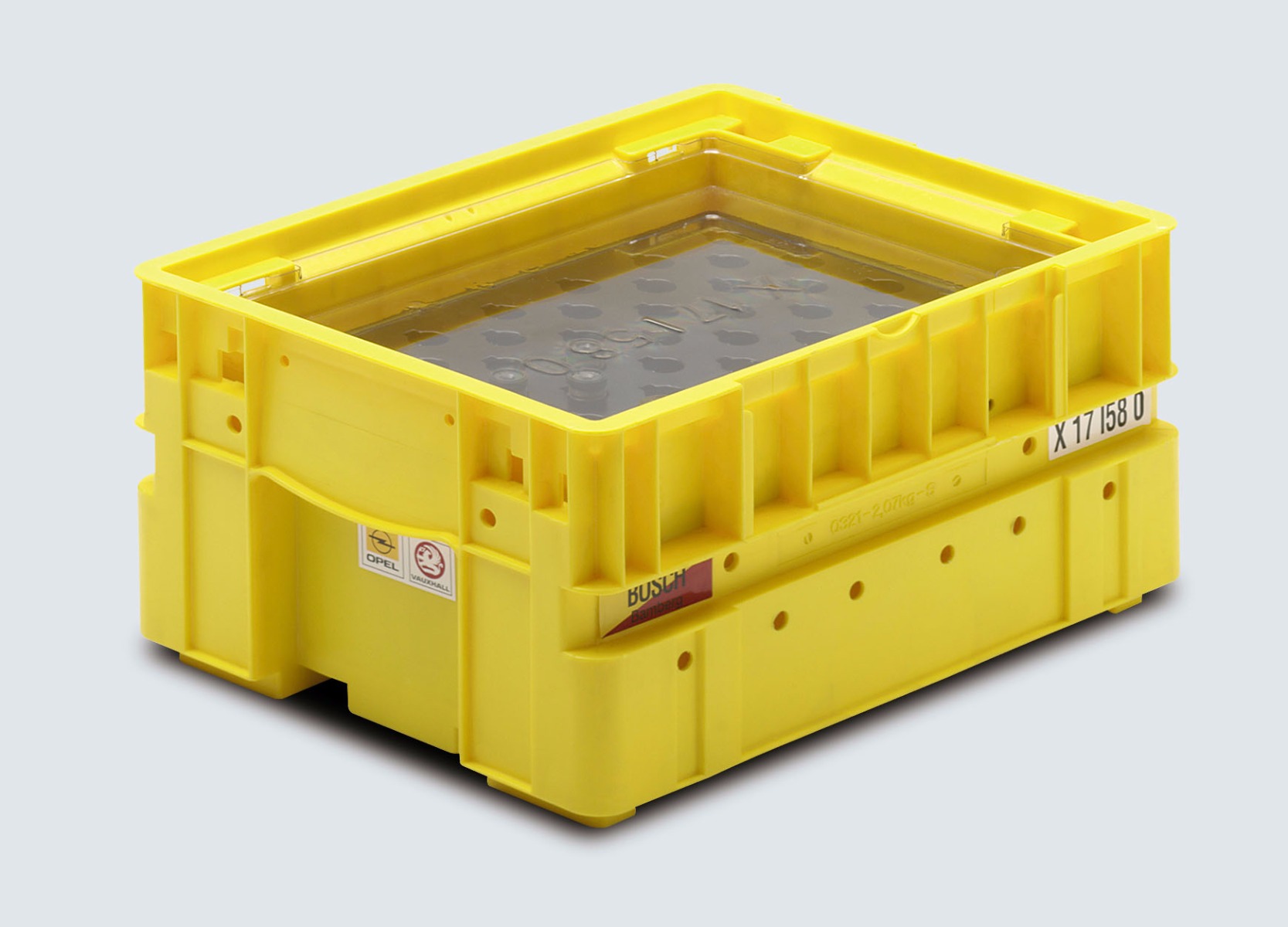
ESD or electrostatic discharge
Vacuum moulding, rotation, welding or injection moulding? We can always manufacture in ESD safe plastic, with a surface resistance of about 6000 ohm the removal of static electricity happens safely.
Everyone carries a electrostatic charge. In dry weather, when wearing shoes with rubber soles this can easily reach 40.000 volts. Enough for sparks, shocks and igniting gas explosions. Even worse: an imperceptible discharge of less then 10% of the charge mentioned earlier can permanently damage electronic components. Micro-thin connections inside of the chips can short circuit completely, or even worse, just partially. In the last case a watch, laptop or on-board computer will fail after a short use, wich brings a lot of costs and annoyance. By adding a carbon fiber compound during production we supply packaging wich can prevent all of that.
EPP (Expanded Poly Propylene)
By adding a propellant to polypropylene pellets, they swell when heated, mostly by steam. The product is called EPP (Expanded Poly Propylene). The mold forms a waterproof, very strong, light, thermal insulating product. EPP is known for its excellent insulating properties, is very strong, but also amazing light weight and therefore ideal for delivery and shipping. Engels offers a wide range of thermoboxes.
Example bottom left: For Linde Gas: Cooled distribution of medications, and transport of oxygen bottles, both using EPP foam interiors.
Additives to protect against corrosion and fungi
From a few hundred pieces, we provide our plastic boxes of additives that protect the contents from corrosion, static electricity and possibly even molding!
Example bottom right: VDA transport container effectively protects its white steel content from rusting by "wetting" ECM milligrams, at least as long as it is fitted with a lid.




